FW
China will reduce import tariffs on goods from India, South Korea, Bangladesh, Laos and Sri Lanka from July 1. The products on which the tariffs will be reduced include soybean from 3 per cent to zero, chemicals, agricultural products, medical supplies, clothing, steel and aluminium products. All imported products from these five countries will adapt a tariff rate of the Second Amendment of The Asia-Pacific Trade Agreement.
India has been pressurising China to open its markets more for Indian products, especially IT and pharmaceuticals, to reduce $51 billion in over $84 billion trade. During the India-China strategic dialogue in April, Rajiv Kumar, vice chairman of NITI Aayog, had pitched for export of soybean and sugar to China from India. Early this month, Premier Li Keqiang had announced that China will reduce the average tariff rate for clothing, shoes and hats, kitchenware and sports and fitness supplies from 15.9 per cent to 7.1 per cent from July 1
The Belt and Road Global Forum held its first annual roundtable at the Hong Kong Convention and Exhibition Centre (HKCEC). The conference was attended by over 80 member organisations from 24 countries and regions. It was divided into two parts. The first session examined the Belt and Road Initiative from a global perspective, covering topics including business opportunities arising from the initiative, Chinese investment trends, the infrastructure needs of different regions, as well as the different approaches to facilitating infrastructure investment and financing in emerging economies. The second session explored the practical aspects of the initiative through discussions on sources of funding, investment models, project identification, risk mitigation, and case studies of best practices.
The forum is an alliance of chambers of commerce, industry associations, investment promotion agencies and think tanks in Hong Kong, the Chinese mainland and around the world. It aims to promote interaction, share information and business collaboration among member organisations. At present, the forum has a membership of more than 110 organisations from 29 countries and regions with the Hong Kong Trade Development Council (HKTDC) serving as the secretariat. It will hold annual roundtable meetings to promote closer cooperation among members.
Amfori, is a leading global business association for open and sustainable trade that has a membership of more than 2,200 retailers, importers, brands and associations across 44 countries on four continents. It has the strongest membership in the US, Canada, Australia, UK and Spain.
Amfori has introduced a new governance structure, extended its membership offering, launched new tools and expanded upon its global network to bring its members closer to the operations of their business partners in supply chains that stretch across the world.
The group has forged partnerships. Key among them are with the Swiss non-profit myclimate, the Zero Discharge of Hazardous Chemicals Program, the German Partnership for Sustainable Textiles, the Chinese Belt and Road Industrial and Commercial Alliance and the EU Chamber of Commerce in China.
In Thailand, Amfori has launched a 12 month capacity building project for responsible recruitment practices supporting due diligence by small companies in global supply chains. To match its ambition for inspiring action across the world and serve its growing global membership, in 2017-18 Amfori established its first office in Latin America, opened one in Bangladesh and added to local teams in India and Greater China. The aim is to encourage those who want to use trade for good in the world.
Loop’s Generation II technology is more well-organised and productive than the Generation I process. It includes a considerable reduction in energy use and the complete elimination of water. The Generation II technology is a major step forward in sustainable plastic.
Loop is a leader in the PET and polyester fiber upcycling industry. The most remarkable change introduced in the Generation II technology is Loop’s decision to produce a monomer from which it makes Loop PET resin and polyester fiber from terephthalic acid.
Loop’s short-term prime concern will be large-scale commercialization of this Generation II technology to respond to the demands of brand owners who have committed to aspiring sustainability targets, which can now be achieved through the use of Loop PET and polyester resin.
With Generation II technology upcycling waste PET and polyester fiber will be cost effective, scalable and very efficient on a commercial scale. It will be possible to help divert even more waste plastic from landfills and help prevent it from ending up in rivers and oceans. This ground-breaking technology decouples plastic from fossil fuels by depolymerizing waste polyester plastic to its base building blocks. Loop branded polyester resin allows consumer goods companies to meet and exceed their stated sustainability goals and circular ambitions.
"In order to boost its economy by 2025, Ethiopia has devised a well-crafted strategy where textile forms one of the crucial components of the economy. These efforts seemed to have paid off well with Ethiopia ranking seventh most attractive African country for investors as per Africa Investment Index (AII) 2018. Backed by a rapidly growing economy, a huge population of over hundred million, proximity to major international markets, conducive policy environment and a rapidly improving infrastructure, it has become a favorable destination for foreign investors. In fact, many companies have shifted their manufacturing units from countries such as Turkey, India and China to Ethiopia over the past decade. Moreover, many European and American companies are expanding their presence in the region."
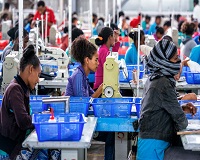 In order to boost its economy by 2025, Ethiopia has devised a well-crafted strategy where textile forms one of the crucial components of the economy. These efforts seemed to have paid off well with Ethiopia ranking seventh most attractive African country for investors as per Africa Investment Index (AII) 2018. Backed by a rapidly growing economy, a huge population of over hundred million, proximity to major international markets, conducive policy environment and a rapidly improving infrastructure, it has become a favorable destination for foreign investors. In fact, many companies have shifted their manufacturing units from countries such as Turkey, India and China to Ethiopia over the past decade. Moreover, many European and American companies are expanding their presence in the region.
In order to boost its economy by 2025, Ethiopia has devised a well-crafted strategy where textile forms one of the crucial components of the economy. These efforts seemed to have paid off well with Ethiopia ranking seventh most attractive African country for investors as per Africa Investment Index (AII) 2018. Backed by a rapidly growing economy, a huge population of over hundred million, proximity to major international markets, conducive policy environment and a rapidly improving infrastructure, it has become a favorable destination for foreign investors. In fact, many companies have shifted their manufacturing units from countries such as Turkey, India and China to Ethiopia over the past decade. Moreover, many European and American companies are expanding their presence in the region.
Political stability a big plus
With IMF forecasting economic growth at 8.5 per cent for the next year, Ethiopia is expected to consolidate its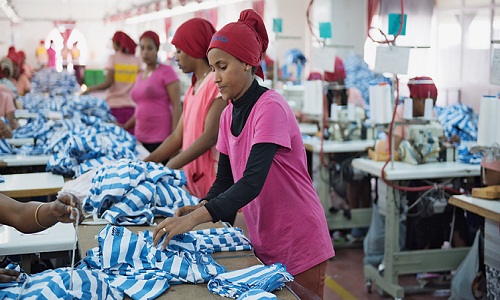 position as the fastest growing economy in Africa. As per IMF, the country also had an average of 10 per cent economic growth over the past few years. Various factors are aiding growth. One, is the political stability. The popularity of new prime minister, Abiy Ahmed and the sense of unity he has stimulated among people has given a boost to growth.
position as the fastest growing economy in Africa. As per IMF, the country also had an average of 10 per cent economic growth over the past few years. Various factors are aiding growth. One, is the political stability. The popularity of new prime minister, Abiy Ahmed and the sense of unity he has stimulated among people has given a boost to growth.
A recent CNN report states, Ethiopia is now Africa’s fastest growing economy. Vijaya Ramachandran, Economist, Center for Global Development (CGD), credits Ethiopia's growth to government efforts to boost industrial production and manufacturing. The report mentions Ethiopia can follow China’s footsteps, and become a destination for low-wage manufacturing jobs. Categorising African states into three in terms of their income levels, the first group consists of solidly middle-income countries. This group includes South Africa and Botswana, which are characterised by very high labour costs and capital intensive industries. The second group includes leading low and lower-middle lower-income African countries like Kenya, Tanzania and Senegal – coastal, relatively stable, and with a strong business sector. These countries have relatively costly labour compared to countries like Bangladesh. The third group consists of countries at the very low end of the income spectrum, so poor that there are almost no real comparators.
Though landlocked, Ethiopia is making efforts to work on logistics constraints through road and rail connections; it also has good air connections. It has a stable administration that sees the manufacturing as a central part of its growth strategy. It also benefits from generally low costs. As measured by Purchasing-Power Parity, the general level of prices in Ethiopia is below the level in India and comparable to that of in Bangladesh.
Labour costs
Higher labour prices and problems of poor working conditions in Asian industrial locations are major pull factors for the region. Ethiopia has lower labour wages and better working conditions than the countries with reputation for poor working conditions. In the International Trade Union Global Rights Index, Ethiopia fared better than Mexico and Malaysia. There have, however, been health and safety concerns in some instances. As per the report, there are no restrictive labour laws in Ethiopia, which is meant to show that companies have relatively bigger room to manipulate labour. These conditions need to be improved. With so many positives by its side, Ethiopia is sure to grab the global manufacturing attention.
"Over the past few seasons, there has been growing interest in black denim, from the trucker jackets to dresses and regular five-pocket jeans. The consumer today desires a garment that stays black even after multiple washes, providing that benefit of a lasting product. SuperCharged Noir collection strives to provide exactly this, ensuring that the supply chain passes this innovation to the retailers, the brands, and ultimately to the consumer."
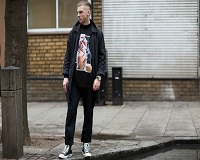 Over the past few seasons, there has been growing interest in black denim, from the trucker jackets to dresses and regular five-pocket jeans. The consumer today desires a garment that stays black even after multiple washes, providing that benefit of a lasting product. SuperCharged Noir collection strives to provide exactly this, ensuring that the supply chain passes this innovation to the retailers, the brands, and ultimately to the consumer.
Over the past few seasons, there has been growing interest in black denim, from the trucker jackets to dresses and regular five-pocket jeans. The consumer today desires a garment that stays black even after multiple washes, providing that benefit of a lasting product. SuperCharged Noir collection strives to provide exactly this, ensuring that the supply chain passes this innovation to the retailers, the brands, and ultimately to the consumer.
As a part of its ongoing partnership with Invista’s Cordura brand and Lenzing Tencel, Artistic Milliners debuted its latest denim collection SuperCharged Noir at Kingpins in Amsterdam, last month. The collection addresses the need for a long-lasting black color meanwhile while also reflecting on other trends such as softness and sustainability that the consumers are looking for today.
The panchtantra (five elements) influence
Created by implementing latest in smart and sustainable fibre technologies, the new SuperCharged Noir denim collection with Cordura brand and Tencel fibres is inspired by five components, via its 5S technology: stay-true colour, enhanced strength, engineered soft comfort, sustainable innovation and performance stretch. The fabrics are designed to stand up to the challenges of an active lifestyle to combine durability and flexible comfort.
collection with Cordura brand and Tencel fibres is inspired by five components, via its 5S technology: stay-true colour, enhanced strength, engineered soft comfort, sustainable innovation and performance stretch. The fabrics are designed to stand up to the challenges of an active lifestyle to combine durability and flexible comfort.
By incorporating latest state-of-the art Invista nylon 6,6 Black SDN fibre technology, the makers were able to add a new dimension in stay true colour and enhanced strength and abrasion resistance to the collection. The Tencel fibres and Artistic Milliners complement these attributes with added colour fastness, softness, sustainability and stretch. This collection provides durable fabric with added colour-fastness to help clothes look and stay newer longer. It is infused with colour-fastness locked in at the fibre level for excellent shade consistency and long-lasting vibrancy.
The SuperCharged Noir collection aims to reach both “fashion” and “workwear” brands, as well as kidswear designers, who are looking for a durable, comfortable and responsible denim product for their customers.
"Bangladesh export earnings from the US has been dipping at the rate 4.46 per cent to reach $5.07 billion in 2017 from $5.30bn a year ago, as reported by the data by OTEXA. Owing to this, its share in the US apparel market came down to 6.31 per cent from 6.58 per cent. While Vietnam registered over 7 per cent growth in the US apparel market, followed by Mexico at 5.33 per cent, India at 1.19 per cent, and Pakistan at 1 per cent in the same period. China, the largest exporter of apparel products, also saw a decline in export earnings as well as market share in the US. Rising labour costs in China and the country pushing towards service-based economy are some of the reasons behind its decreasing export share. However, with the ongoing trade war between China and the US, Bangladesh and Vietnam are the strong contenders to fill the gap."
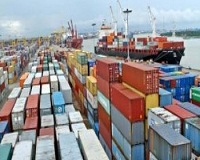 Bangladesh export earnings from the US has been dipping at the rate 4.46 per cent to reach $5.07 billion in 2017 from $5.30bn a year ago, as reported by the data by OTEXA. Owing to this, its share in the US apparel market came down to 6.31 per cent from 6.58 per cent. While Vietnam registered over 7 per cent growth in the US apparel market, followed by Mexico at 5.33 per cent, India at 1.19 per cent, and Pakistan at 1 per cent in the same period. China, the largest exporter of apparel products, also saw a decline in export earnings as well as market share in the US. Rising labour costs in China and the country pushing towards service-based economy are some of the reasons behind its decreasing export share. However, with the ongoing trade war between China and the US, Bangladesh and Vietnam are the strong contenders to fill the gap.
Bangladesh export earnings from the US has been dipping at the rate 4.46 per cent to reach $5.07 billion in 2017 from $5.30bn a year ago, as reported by the data by OTEXA. Owing to this, its share in the US apparel market came down to 6.31 per cent from 6.58 per cent. While Vietnam registered over 7 per cent growth in the US apparel market, followed by Mexico at 5.33 per cent, India at 1.19 per cent, and Pakistan at 1 per cent in the same period. China, the largest exporter of apparel products, also saw a decline in export earnings as well as market share in the US. Rising labour costs in China and the country pushing towards service-based economy are some of the reasons behind its decreasing export share. However, with the ongoing trade war between China and the US, Bangladesh and Vietnam are the strong contenders to fill the gap.
Who would win ultimately?
Major comparative advantages of Bangladesh apparel industry are lower wages, high capacity suitable for large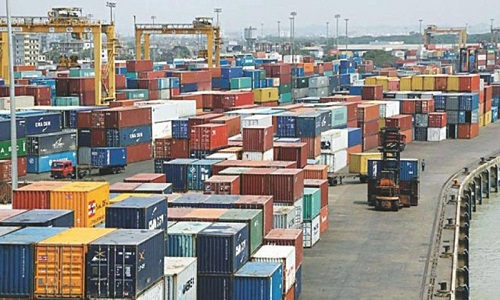 volume orders, and lean manufacturing. Bangladesh has inherent supply of local cotton, yarns, and fabrics, even though it is not sufficient to cover the entire demand of the apparel export sector. The high dependence on importing most of cotton and fabric to sustain apparel manufacturing contributes to longer lead times. To add to the woes are the poor infrastructure, inefficient logistics, and unstable energy supply.
volume orders, and lean manufacturing. Bangladesh has inherent supply of local cotton, yarns, and fabrics, even though it is not sufficient to cover the entire demand of the apparel export sector. The high dependence on importing most of cotton and fabric to sustain apparel manufacturing contributes to longer lead times. To add to the woes are the poor infrastructure, inefficient logistics, and unstable energy supply.
Vietnam on the other hand has much higher labour cost (twice or thrice of Bangladesh) but this disadvantage is nullified by higher productivity of skilled and better trained workers. Hence, Vietnam can produce intricate styles with agile and flexible manufacturing. Its infrastructure, logistics services and reliable energy supply are state-of-the-art, resulting in shorter lead times. However, Vietnam lacks in domestic raw materials and primarily relies on imported textiles. But Vietnam’s proximity to China makes transporting raw materials easier and convenient. In terms of product portfolio, Bangladesh has much less diversified product portfolio than its Vietnamese counterparts.
Of Bangladesh’s total exports, 79 per cent are concentrated in five basic products: trousers, T-shirts, sweaters, shirts, and jackets. In comparison, Vietnam has a more diversified product portfolio. 63.1 per cent of Vietnam’s apparel exports to the US comprise of these top 10 product categories: women’s knit shirts and blouses (MMF), women’s trousers (cotton), women’s knit shirts and blouses (cotton), women’s trousers (MMF), men’s knit shirts (cotton), dresses (MMF), men’s trousers (MMF), men’s knit shirts (MMF), men’s trousers (cotton), and women’s coats (MMF).
Playing it safe
Rather than banking on just one market, Vietnam has diversified its reach and because of that, despite the abandonment of the Trans-Pacific Partnership (TPP) last year, Vietnam’s textile and garment industry exceeded its 2017 target of $30bn with an export turnover of over $31bn, registering an increase of 10.23 per cent from the prior year. While the US, EU, Japan, and South Korea maintained good growth, China, Russia, and Cambodia registered a strong export lead.
Vietnam has also invested big in the development of shuttle less looms and the biggest investor in ring spindles and open-end rotors, amongst the ASEAN countries. The lesson for Bangladesh is clear that one cannot compete on low-cost advantage alone. The country needs to move away from mass market commodities to higher value-added fashion goods or increase productivity. Its garment factories must re-engineer their operations to increase worker skills.
Embracing technology, up-skilling workforce to meet new technology needs, moving up the value chain in its product-portfolio from basic commodity to high end fashion, diversification of markets, developing a conducive climate for attracting foreign investment, improving ranking in the global competitive index on all pillars, developing our infrastructure, developing our own textile sector to reduce over-dependence on raw-materials and thus reduce lead times would all ensure that Bangladesh can retain its number two spot as the apparel exporter to the world.
"The ‘Pulse of the Fashion Industry’ report by Copenhagen-based Global Fashion Agenda (GFA) in partnership with Boston Consulting Group (BCG), reveals that textile/apparel is the world’s second most polluting industry after oil, and has ample room for improving its sustainability performance. The textile/apparel sector's overall score is low at 38/100. Big sportswear companies are well ahead of the pack with a score of 84/100. A performance explained by their sometimes troubled history in terms of the working conditions in some of their suppliers’ factories, as well as their efforts to deliver innovative products, which pushes them to tread new ground, in the fields of circular economy and recycled materials."
 The ‘Pulse of the Fashion Industry’ report by Copenhagen-based Global Fashion Agenda (GFA) in partnership with Boston Consulting Group (BCG), reveals that textile/apparel is the world’s second most polluting industry after oil, and has ample room for improving its sustainability performance. The textile/apparel sector's overall score is low at 38/100. Big sportswear companies are well ahead of the pack with a score of 84/100. A performance explained by their sometimes troubled history in terms of the working conditions in some of their suppliers’ factories, as well as their efforts to deliver innovative products, which pushes them to tread new ground, in the fields of circular economy and recycled materials.
The ‘Pulse of the Fashion Industry’ report by Copenhagen-based Global Fashion Agenda (GFA) in partnership with Boston Consulting Group (BCG), reveals that textile/apparel is the world’s second most polluting industry after oil, and has ample room for improving its sustainability performance. The textile/apparel sector's overall score is low at 38/100. Big sportswear companies are well ahead of the pack with a score of 84/100. A performance explained by their sometimes troubled history in terms of the working conditions in some of their suppliers’ factories, as well as their efforts to deliver innovative products, which pushes them to tread new ground, in the fields of circular economy and recycled materials.
For the same reason, companies positioned at entry-level and generating more than €8 billion in annual revenue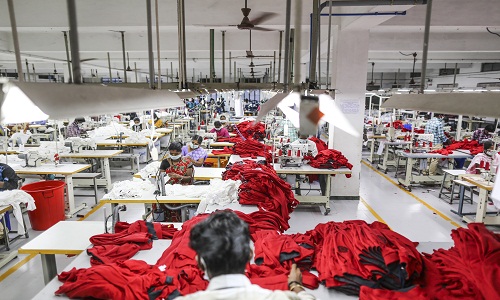 have, on average, a score of 67/100. On the other hand, companies which generate less than €80 million in revenue posted the lowest scores: 20/100 on an average for entry-level segment, and 37/100 for the mid-price segment. The study observed mid-price players, by adopting solutions consistent with the size of their business, have managed to improve significantly. Only the luxury segment recorded the same score for great groups and smaller entities alike: 51/100.
have, on average, a score of 67/100. On the other hand, companies which generate less than €80 million in revenue posted the lowest scores: 20/100 on an average for entry-level segment, and 37/100 for the mid-price segment. The study observed mid-price players, by adopting solutions consistent with the size of their business, have managed to improve significantly. Only the luxury segment recorded the same score for great groups and smaller entities alike: 51/100.
The companies surveyed said they prioritise design and product development more than production processes and, above all, materials. The latter is a crucial area, where 89 per cent companies are keen to make further progress in the next few years. The study highlighted that, in order to respond to the market's and consumers’ expectations, short-term innovation in materials will be necessary to furnish new, industry-wide solutions.
Opting for a circular approach
Indeed, a few companies train their styling teams to adopt a circular approach, envisaging from the design phase how products can be recycled. However, the majority still has a long way to go. Workshops for garment repairs are also thriving. While the study pointed out improving recycling of discarded products will still need a few more years, the use of RFID tags carrying information on the exact composition of the product seems to be the best way to recycle it.
Analysts feel industry players will have to move forward collectively in order to truly step up to the next level. The main challenge identified by the ‘Pulse of the Fashion Industry’ report is that of leading as many companies as possible on the road towards ecological and social change. To make comfortable progress, companies need to implement a system for full supply chain traceability, improve the way they consume water, energy and chemicals, and uphold and/or demand compliance to standards in terms of working conditions. In second phase, they should be able to source a responsible mix of sustainable materials, introduce a circular approach to business, promote improvements in worker remuneration and finally tap the opportunities provided by the electronic and digital revolution. All of these changes (and investments) need to be incorporated in business strategies. The report suggests, companies which invest on environmental and social initiatives will earn themselves a ‘bonus’ in operating margin by 2030: rising to the new challenges will be worth the effort.
VF Corporation has appointed Travis Campbell the new Vice President, General Manager, The North Face®, Americas. Campbell was earlier engaged as the President of VF’s Smartwool brand. At The North Face®, he will provide leadership and vision for the brand’s American business by creating and executing growth strategies in sales, direct-to-consumer and merchandising. He will also play an important role in establishing the Americas Region Leadership Team and ensuring the successful regional activation of the global brand vision and strategy. Campbell will report to Arne Arens, Global President, The North Face®.
Prior to VF, Campbell was President & CEO of Far Bank Enterprises, an integrated manufacturer and distributor of fly fishing products and owner of the Sage, Redington, and RIO brands. In 2005, he became President of Rio Products International, Inc., and in 2003 he was named President of Redington Tackle & Apparel. Prior to these roles, Campbell served as Director of Business Development for Sage Manufacturing. He also held various positions at Deloitte Consulting and Andersen Consulting.
The Europe-India Chamber of Commerce (EICC) has joined hands with industry bodies representing the US, Canada and Japan to issue a Brexit plea to the UK to make urgent progress on the issue. The groups also include the American Chamber of Commerce to the EU, Canada Europe Roundtable for Business and Japan Business Council in Europe. They represent the interests of an array of international businesses who are heavily invested in both the European Union and the UK and warned that the clock was ticking towards the October deadline for Britain to strike a final withdrawal agreement with the EU.
In the lead up to the European Council summit in Brussels, they have urged policymakers to address issues around governance, regulatory cooperation and post-Brexit preparedness. They say reaching agreement on these issues will provide businesses with more confidence that a withdrawal agreement can be agreed and ratified, thereby providing legal certainty for the proposed transition period and avoiding the worst-case cliff-edge scenario in March 2019. While they recognise the complexity of finding a solution for the Irish border, they say the EU and UK must continue to try to find agreement on the issue that is seen as a stumbling block to an agreement.












